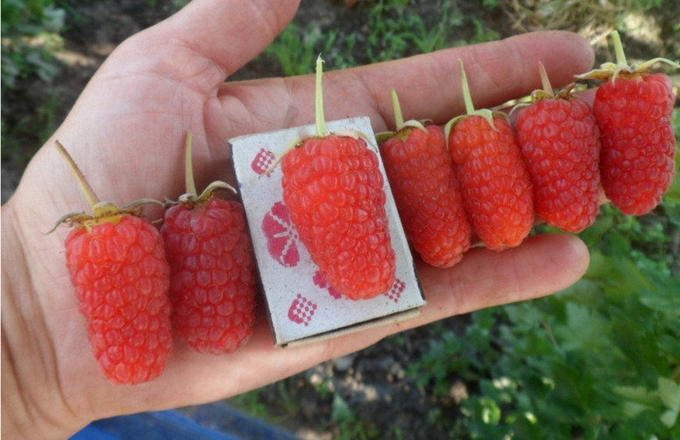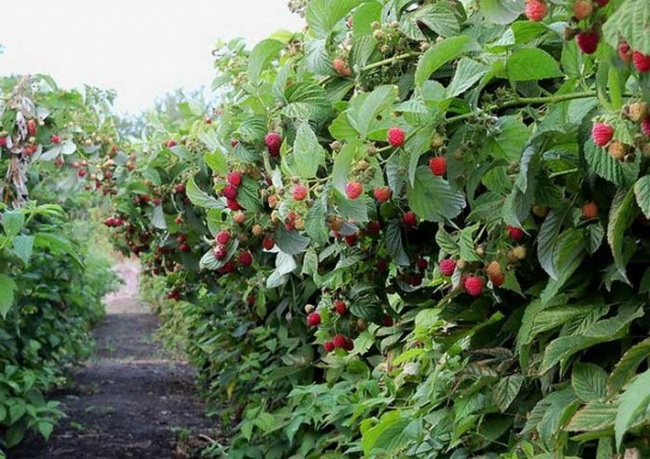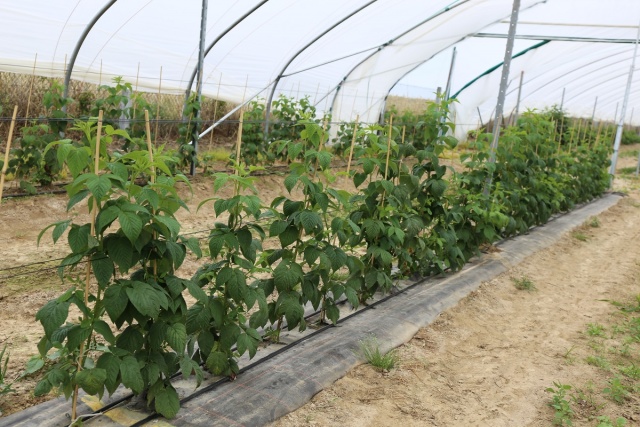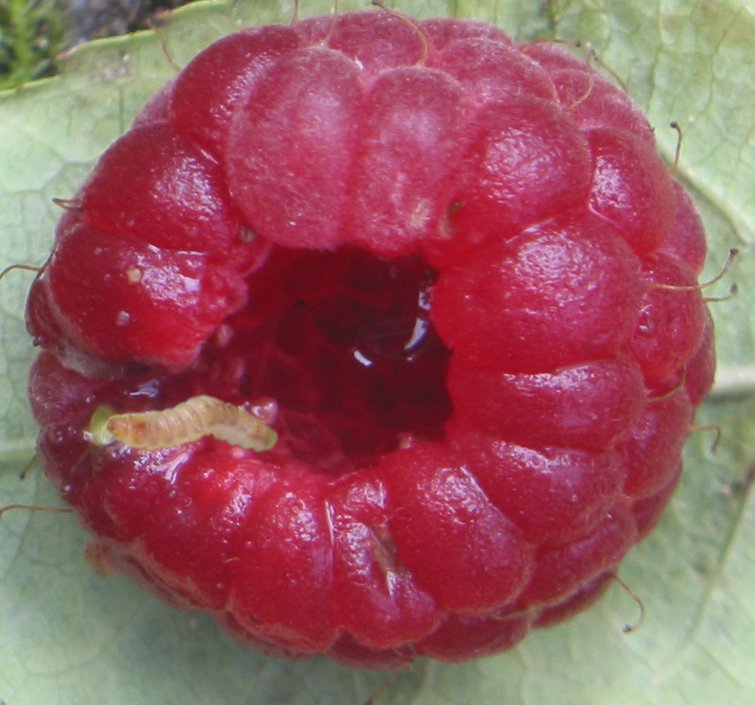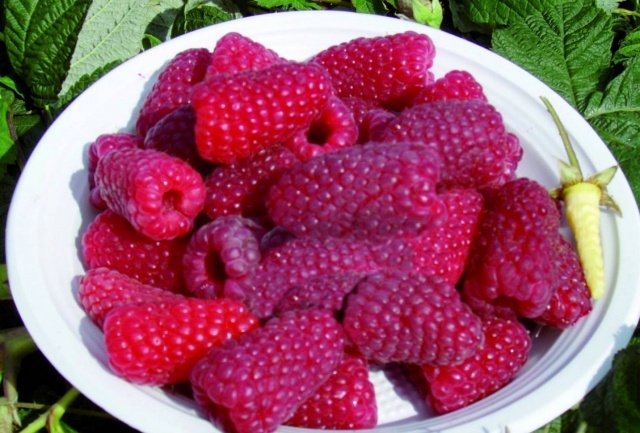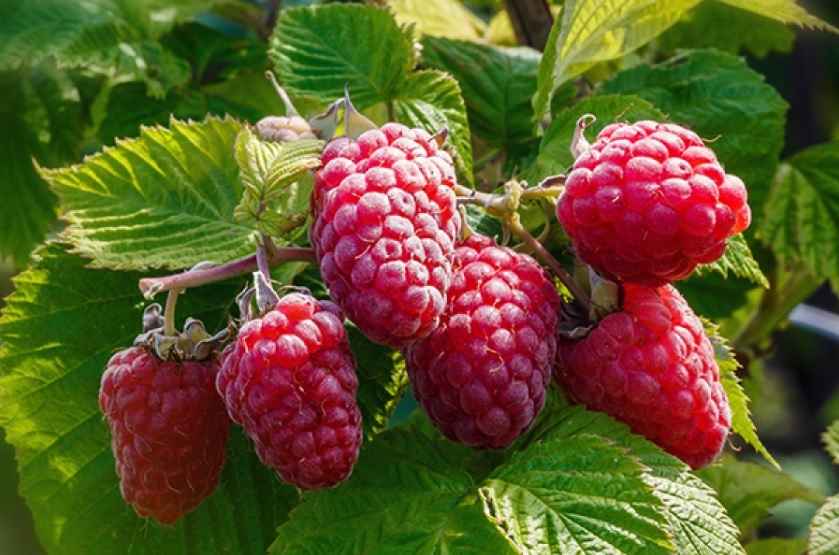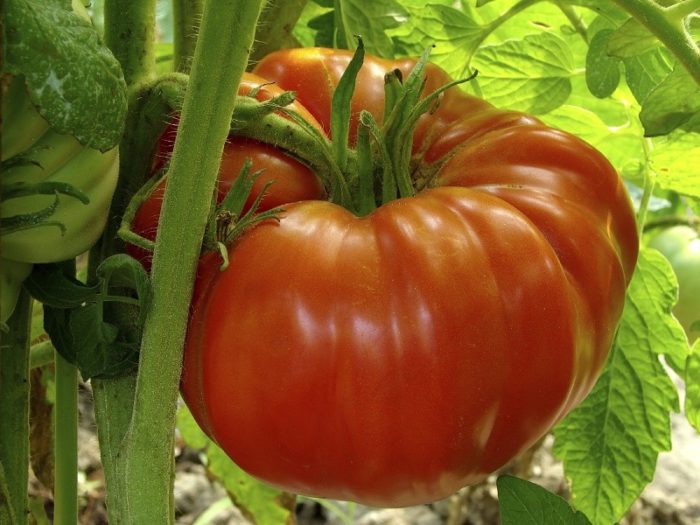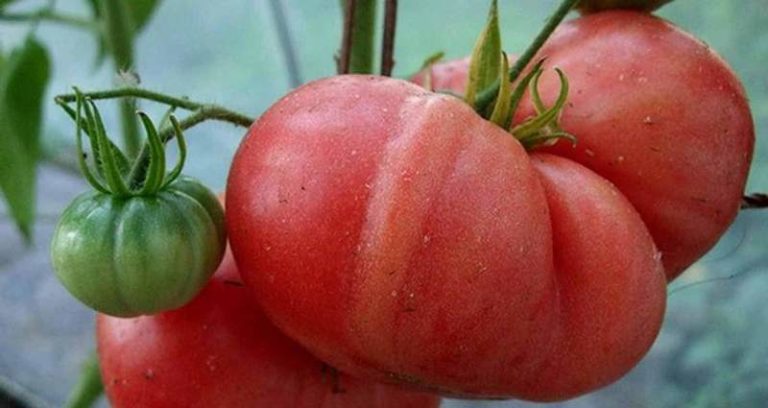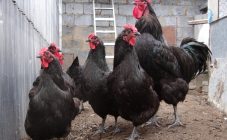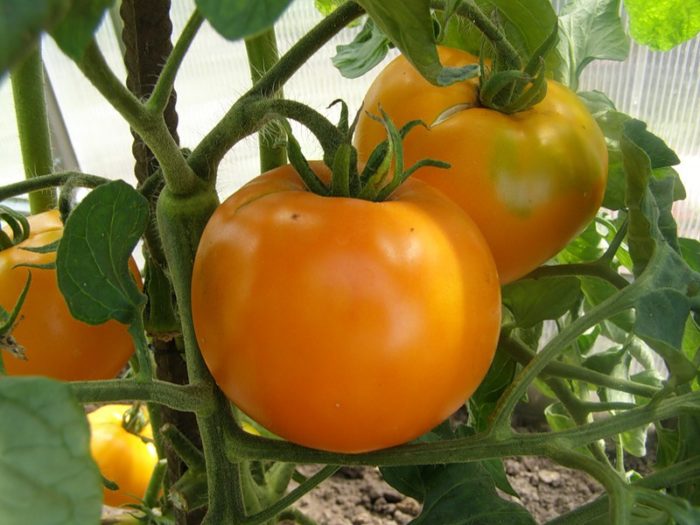The opportunity to pamper yourself all summer with delicious fragrant berries is given to summer residents by remontant cultures. Raspberry The Ruby Giant not only gives 2-3 harvests per season - it is a large-fruited variety with a lot of advantages.
Features and characteristics
This type of berry is a novelty in horticulture, it is a kind of Patricia raspberry, which took all the best from it. The description of the Ruby Giant raspberry variety below will make sure of this:
- branchy bushes reach a height of 1.8 m and have a distinctive feature - they are thornless;
- raspberry lives up to its name - it really has a giant fruit reaching a mass of 11 g;
- The giant is quite productive - about 2 kg can be taken from a bush in one run, and up to 8-9 kg for the whole season;
- ripening occurs in July, and the fruiting period stretches for 3 months;
- in shape, the berry resembles a truncated cone, painted in a pink shade of ruby;
- the aroma of the fruits is truly raspberry, but the tasting qualities are inferior to some varieties; but this does not prevent you from making delicious jams from the berries.
The duration of fruiting of giant raspberries is due to the fact that the berries on the shoots ripen unevenly and ripen slowly. In addition to the described features of the bush, the advantages of this variety should also be highlighted.
Pros of the giant raspberry:
- unpretentious to growing conditions;
- the density of the berries makes them transportable;
- Giant is a frost-resistant variety (tolerates well up to -30 degrees);
- another important characteristic is immunity to most infectious diseases.
It is possible to increase the large-fruited variety if the plants are properly cared for.
Growing features
Regardless of whether it is a remontant bush or not, the rules of agricultural technology are always important. It all starts with choosing a place for landing. To prevent yields from falling, the Ruby Giant is planted on sunny hills. In the shade, the berry will not turn out sweet enough.
It is necessary to protect the bushes from drafts by determining the places for planting along the fences or at the southern facades of buildings, departing from them at a considerable distance. Raspberry thornless Giant requires free space around itself due to the spreading of branches.
When choosing the type of soil, they look at its fertility and looseness - these are important conditions for the comfortable cultivation of this variety. It is necessary to take into account the fact that raspberries love moist soil, but cannot tolerate stagnant water.
Site preparation
The varietal bush will bear fruit abundantly, so it will take a lot of strength. Before planting, it is recommended to do soil enrichment. On the cleared and dug area, trenches or holes are dug in advance for seedlings. Their depth and width should be 40-50 cm.
Fertilizers are spread at the bottom of the depressions - 25 g of potassium-containing preparations, 15 g of phosphates for every 10 kg of humus. A layer of earth is poured on top, and immediately before planting, the contents of the hole or ditch are dug up, adding more peat and wood ash.
Landing
Malina Giant ruby is planted both in spring (March-May) and in autumn (September-October).
Each case has its own peculiarities of landing, but there is also something in common in the techniques:
- the distance between the bushes is chosen at least 1-1.5 m, between the rows - 2-2.5 m;
- several landing methods are used: in holes, trenches, along the tops of a square or an isosceles triangle; the last 2 options are preferable in large areas.
Interesting. Features of seasonal planting have similarities and differences. The choice of the season depends mainly on the region, as well as the preferences of the gardeners.
Features of seasonal plantings
| Spring | Fall |
|---|---|
| During this period, it is not always possible to have time to plant before budding due to prolonged frosts. | Temperature and water conditions during this period are optimal for growing roots. |
| For northerners, the spring procedure is preferable - with the early arrival of frosts in the fall, the seedlings will not have time to take root | This season is preferable for southern regions with warm winters and wet autumn. But here, too, it is necessary to have time with landings before the onset of frost. |
| Only sprouts with a strong root system are planted so that they immediately take root and begin to build up the aerial part | By the fall, the root offspring gained strength, and they can be safely cut off from the mother bush and transplanted to a new place |
| When planting in spring, the roots should be buried slightly lower than when planting in autumn | It is convenient to divide the bushes after they hatch |
The seedlings are lowered vertically into the ground, spread the roots and sprinkle them with earth. The closed-system sprouts are placed in the recesses together with the earthen clod. After tamping, the bushes are watered and mulched. If planting occurs in the fall, it is recommended to dip the roots in a clay mash; in the spring this is not necessary.
Raspberry care
Raspberry Ruby is a giant unpretentious care. But if gardeners are striving to get a large harvest, it is worth paying maximum attention to agricultural technology.
Loosening
The main point is to keep the soil loose in order to ensure air circulation in the root zone. Weeds are removed in parallel.
The first call is done before the buds swell. For the whole season, there should be at least 5 loosening. It is advisable to carry out this procedure after every rain. But if there is no time for agrotechnical measures, it is enough to lay a good layer of mulch around the bushes with compost, straw, sawdust or tree bark.
Watering
Throughout the season, varietal shrubs are watered as needed.
But there are points that should not be ignored:
- carry out abundant irrigation during the flowering of the berry and at the beginning of the ripening of the fruits;
- after harvesting the first call, the soil is well moistened so that the ripening of subsequent berries is not delayed;
- watering of raspberries is required before wintering.
In hot weather, on large plantations, it is more rational to apply a drip supply of moisture to the bushes.
Garters
The spreading of the branches of the variety requires the installation of a trellis. Support for it is made out in advance, since spring, so as not to injure the roots later. As the shoots grow, a wire is pulled on the pillars, along which the stems will then weave.
Bush formation
This stage of care for the Ruby Giant has several features that differ from other varieties:
- you should not spare the regrown branches - if you cut them off every autumn, then on the young shoots of the next year you can get at least a late, but more abundant harvest;
- complete removal of the stems (only 2-3 cm stumps remain) will provide a comfortable wintering of plants and exclude the presence of viruses and bacteria;
- if some of the shoots remain under cover, in the spring they are checked for quality: frozen, dry and diseased stems are cut off completely; but this must be done before the leaves bloom, otherwise there is a risk of damaging the plant.
In summer, young shoots are removed by regular pruning so that it does not take on the strength of the bush. This will provide a larger berry and, therefore, increase yields.
Nutrition
The formation of large fruits is not realistic if the bushes are weakened. Therefore, an important element of agricultural technology is feeding raspberries. The fertilizer that was applied during planting is enough for the first year of the bush's development.
The main dressing begins next year, farmers act according to the following scheme:
- in the spring, mineral water is introduced under the bushes with a predominance of nitrogen components during the growth of shoots, and the complex is also used before the berries ripen;
- in June, thornless raspberry varieties are fed organic: mullein (1:10) or bird droppings (1:20); for each square meter of such food, 5 liters of solution will be needed;
- as soon as the bush begins to produce, a complex fertilizer "Ideal" is applied under it;
- at the end of the season, in the fall, sprinkle phosphate-potassium fertilizers under the cut raspberries - they will help the roots to overwinter.
It is good to combine top dressing with watering. This procedure is carried out exclusively on warm days.
Curative prevention
Despite the resistance of the Ruby Giant to disease, proximity to other varieties can provoke infection. Preventive treatment of bushes before flowering with insecticidal solutions will help to avoid this.
Improper agricultural technology can lead to decay of the roots (this happens when waterlogged), and the fungus will quickly spread to the shoots. To avoid the destruction of the bushes, it is recommended to limit watering and treat the plants with special compounds.
The ruby beauty is not immune to pests that can affect yields. At the first signs of the appearance of insects, they should be immediately dealt with using available methods.
Raspberry pest control measures
| Insect | Description | Recommended measures |
|---|---|---|
| Spider mite | It appears on bushes on hot summer days. You can determine its presence by the dried leaves twisted into a tube. | Colloidal sulfur will help from chemicals. Folk remedies - garlic or onion infusions with the addition of laundry soap |
| Crimson beetle | It gets to the remontant bush from the usual one, feeding on plant flowers. Lays the larvae in the fruit. Winters in the soil under the bushes | Prevention is important - spring digging of the earth around the bush. You can prevent the appearance of a pest by treating plants with special compounds at the time of bud formation. |
| Aphid | She appears on shaded bushes. It settles in colonies that grow very quickly. The pest interferes with the growth of shoots and the formation of flowers | The bushes are treated even before budding with folk drugs or chemicals |
Raspberry Ruby Giant is an attractive varietal remontant in every way. Despite its unpretentiousness, agricultural technology should not be ignored. It will help to achieve large yields of tasty large beautiful berries.
